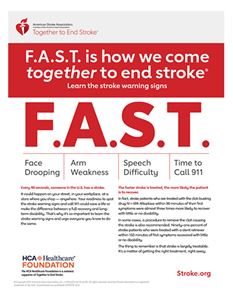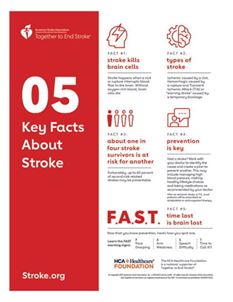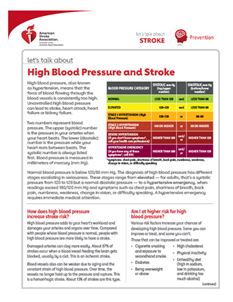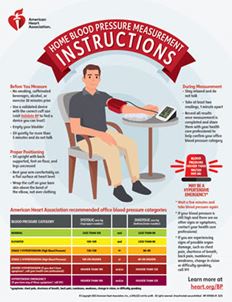 American Stroke Association
American Stroke Association World Stroke Day is October 29
Along with others around the world, we’re raising awareness of stroke symptoms and emphasize the critical importance of calling 911 immediately when these symptoms are recognized.

Join us for World Stroke Day and commit to learning and sharing the F.A.S.T. warning signs. You just might save a life from stroke.
- Strokes can happen to anyone, at any age.
- Globally about one in four adults over the age of 25 will have a stroke in their lifetime.
- Most adults in the U.S. don’t know the F.A.S.T. warning signs of a stroke.
- Stroke is largely treatable if you call 911 as soon as you recognize the symptoms.
Stroke is an emergency. Call 911 if these signs are present.
-

Face Drooping
Does one side of the face droop, or is it numb? Ask the person to smile. Is the person's smile uneven?
-

Arm Weakness
Is one arm weak or numb? Ask the person to raise both arms. Does one arm drift downward?
-

Speech Difficulty
Is speech slurred or difficult to understand? Ask the person to repeat a simple sentence.
-

Time to Call 911
If you have any of these symptoms or see someone else having them, call 911 immediately!
Resources
F.A.S.T. Song - Stroke Signs: featuring Dee-1 & Tha Hip Hop Doc
R.Á.P.I.D.O. PSA
Treat a Stroke F.A.S.T.
Stroke Hero Awards
Who inspires you? Celebrate a survivor of stroke, caregiver, support group — or even yourself! Nominate someone for a Stroke Hero Award in one of six categories and help shine a light on those making a difference through education, support and awareness.
Stroke Support Services
Stroke recovery is within reach. Whether it’s in person, online or on the phone, the American Stroke Association is here to support your journey to recovery.

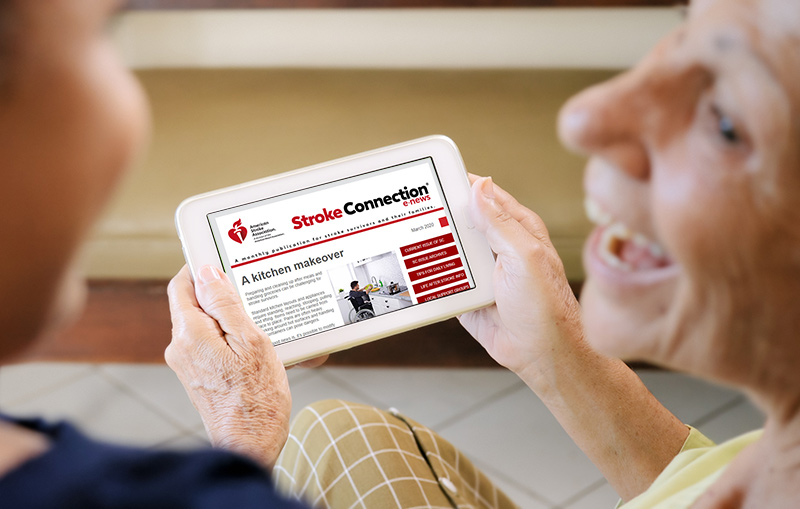

Together to End Stroke® E-newsletter
Stay informed on the latest in stroke research, consumer education and patient resources.

Stroke Connection® E-newsletter
News, resources and stories for stroke survivors, their caregivers and other advocates.
